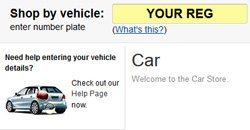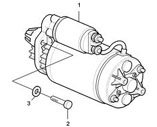 E-Motive partners with companies to scale and grow clients across the world on various marketplaces offering store design, translated listings and multi lingual customer services in all categories of selling. Their specialised Automotive Parts & Accessories Team currently work with brands such as the RAC, Aston Martin and Vauxhall and also aftermarket parts companies such as Hella, Unipart and Febi Bilstein.
E-Motive partners with companies to scale and grow clients across the world on various marketplaces offering store design, translated listings and multi lingual customer services in all categories of selling. Their specialised Automotive Parts & Accessories Team currently work with brands such as the RAC, Aston Martin and Vauxhall and also aftermarket parts companies such as Hella, Unipart and Febi Bilstein.
As specialists, the team works with marketplace catalogues helping sellers index their items and help to avoid issues around the marketplace duplication policy. You can drop them a line for further information on how to sell more on [email protected] and this week they are writing three guest posts, the first of which is published today:
1. Introduction, eBay, Change or Risk Being Restricted.
2. Amazon, Changes for the Better But Not Without Some Pain.
3. The Cross Border Trade Opportunity on Marketplaces for Parts & Accessories.
Amazon, Changes for the Better But Not Without Some Pain
 Amazon – is it becoming a destination to buy parts and accessories?
Amazon – is it becoming a destination to buy parts and accessories?
Up until around a year ago it was a poor experience to purchase anything parts and accessories related on Amazon. As a customer it was very hard to find anything. Amazon have a duplicate listing policy which has been enforced with an iron fist and as many sellers have experienced, once you get a warning you need to act on it as the next communication on the subject is to tell you that your account has been suspended.
Amazon’s structure is totally different than eBay’s; one listing is indexed by EAN or ASIN and the person that creates the listing owns the listing (and can therefore make any amendments). All other sellers propose a selling price against the listing however, unless you have the ‘Buy Box’, you are in nowhere-land and sales are rarely generated.
If you remember, in part one I mentioned that imagery is not very good in P & A. Amazon insists that the item must be on a white background and must be of a particular standard otherwise you will receive a warning and risk suspension.
With all of that in the mix, good sales are generated on the platform – in particular soft car parts where there is no particular compatibility – but if you were selling items such as braking components, then sales were small as unless the customer knew the part number in order to search, the customer was unable to find you.
So what has changed on Amazon in the last year ???
Just like eBay, Amazon want to provide a better experience for their buyer and a big part of that is by putting inventory very easily onto their system. With this arrives the Amazon parts search, a similar research tool to the eBay MVL catalogue, which enables sellers to match their parts to vehicles.
Unfortunately the process is very manual. Items need to be submitted via email with a spreadsheet attached matching to Amazon’s “KBA” catalogue. The good news is that Amazon has pre-loaded a lot of parts onto the platform and predominantly includes anything that is already indexed to the European “Tecdoc” cataloguing system.
 For items already indexed in this way, all you have to do is to match the part number to what is already on Amazon and then select your stock and price. The challenge is identifying those part numbers meaning many people use Amazon tools, third party tools or use a specialist company to do the work for them. Amazon has come a long way but there are still a lot of gaps to the system, the cataloguing for main car manufacturing parts is poor as there is not a central database that covers all motor manufacturers in Europe.
For items already indexed in this way, all you have to do is to match the part number to what is already on Amazon and then select your stock and price. The challenge is identifying those part numbers meaning many people use Amazon tools, third party tools or use a specialist company to do the work for them. Amazon has come a long way but there are still a lot of gaps to the system, the cataloguing for main car manufacturing parts is poor as there is not a central database that covers all motor manufacturers in Europe.
The upshot today on Amazon is that the customer has a better buying experience, they can now select items which will fit their car based on data which is available to them (such as their car registration number), which in turn will result in more sales. Unfortunately though, unless the items you are listing against are already indexed for the KBA catalogue then it is likely that the item will never be found by the buyer.

![! Social Web Template [Recovered] Amazon Future Engineer Scholarship recipients](https://channelx.world/wp-content/uploads/elementor/thumbs/Amazon-Future-Engineer-Scholarship-recipients-qx1k9h8ihd702da3gf56eb3zfdgmqby55wi2ln5bq8.jpg)







2 Responses
> Unfortunately the process is very manual. Items need
> to be submitted via email with a spreadsheet
> attached matching to Amazon’s “KBA” catalogue.
So True.
Not only is it manual. Amazon is also hurting small business owners by not performing the updates once you send the spreadsheets to them.
Preparing these spreadsheets is a lot of work. We happen to have products that each match only a specific set of car models and it is hard work to get that right. We have been exchanging more than 30 emails with them already, either straight to [email protected] and via seller support to get this sorted. No success.
Remember – this is a change Amazon is requesting from sellers, in the mean time randomly delist your products on their website (while we of course have to keep on paying subscription fees), and then do not get anything moving once you have send them the spreadsheets with all the KBA codes, title changes etc.
Partfinder is a joke. At least for small businesses (marketplace) it seems. Bigger fish is probably treated lovely.
We are getting a bit desperate and almost would classify this as unfair competition and wonder if we should report them for anti-competitive business practices (as they delist your products while this is ongoing even if you supplied them with all the right data and do not communicate with you at all giving you any reasons for this).
Just send out yet another spreadsheet for our Landrover products. Not that it helps. Our updates to MINI products have been getting ignored for more than 3 months now. Everytime we get promises no action.
Maybe others have been successful. We have not. It is not that they don’t take enough fees from you – they take 15 % and that’s even over our SHIPPING costs. Amazing – do they add value over OUR shipping cost ? Anyways, as you can see, we’re not quite happy sellers in the automotive category. Others might be.